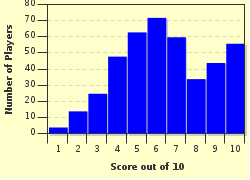Quiz Answer Key and Fun Facts
1. On which Italian bay is the volcano Mount Vesuvius located?
2. Vesuvius erupted in the year 79 AD. How is the year 79 expressed in Roman numerals?
3. During the reign of which Roman Emperor did the eruption of Vesuvius occur?
4. Pompeii and Herculaneum were the two largest cities to be destroyed by the eruption of 79 AD; however, their destruction took very different forms. Pompeii was buried under the pumice and ash that rained down from the volcano, but Herculaneum suffered a different fate. What was this?
5. The excavations give a great understanding of how life in Pompeii and Herculaneum would have been lived before the eruption, from temples, businesses and the justice system to shops and houses. What is the modern-day equivalent of the business believed to have been carried out in a thermopolium?
6. Pompeii and Herculaneum are the two largest and best-known cities destroyed by the eruption. Two other sites from this period have also been excavated and are popular tourist attractions, Oplontis, at Torre Annunziata, being one. Can you name the other?
7. The Villa di Poppaea at Oplontis, in the present-day town of Torre Annunziata, had been home to the second wife of which emperor?
8. Many of the artefacts which were excavated from the ruins of the area are displayed in a major archaeological museum in an Italian city. Which one?
9. Pliny the Elder, who was then head of the Roman navy, was stationed at its base of Misenum at the time of the eruption, and was therefore well placed to observe the volcanic activity. He set sail to attempt a rescue operation, but died in the attempt. His death - and the only first-hand account of the eruption of Vesuvius - was narrated by Pliny the Younger. What was their relationship?
10. Vesuvius is still regarded as an 'active' volcano. There have been eruptions before and since the tragic events of 79 AD. During the Second World War there was a significant - although much smaller - eruption. In which year did this eruption occur?
Source: Author
Jennifer5
This quiz was reviewed by FunTrivia editor
bloomsby before going online.
Any errors found in FunTrivia content are routinely corrected through our feedback system.

